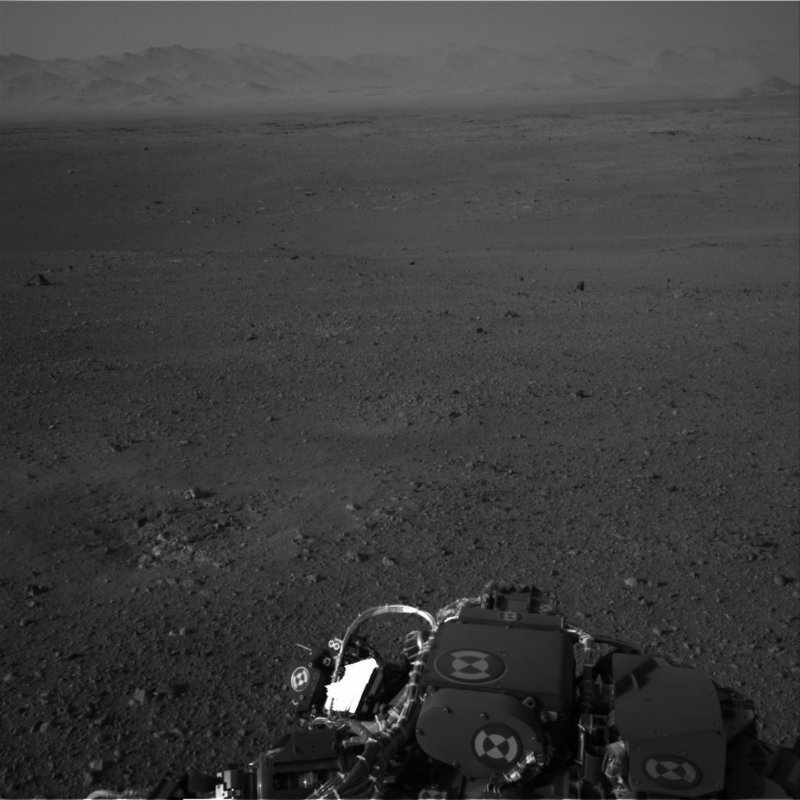PASADENA, Calif. – The ancient Martian crater where the Curiosity rover landed looks strikingly similar to the Mojave Desert with looming mountains and hanging haze, scientists said Wednesday.
“The first impression that you get is how Earth-like this seems looking at that landscape,” said chief scientist John Grotzinger of the California Institute of Technology.
Overnight, the car-size rover poked its head out for the first time since settling in Gale Crater, peered around and returned a flood of black-and-white pictures that will be stitched into a panorama.
It provided the best view so far of its destination since touching down Sunday night after nailing an intricate choreography. During the last few seconds, a rocket-powered spacecraft hovered as cables lowered Curiosity to the ground.
In the latest photos, Curiosity looked out toward the northern horizon. Nearby were scour marks in the surface blasted by thrusters, which kicked up a swirl of dust. There were concerns that Curiosity got dusty, but scientists said that was not the case.
“We do see a thin coating of dust, but nothing too bad,” said Justin Maki, imaging scientist at NASA’s Jet Propulsion Laboratory, which manages the $2.5 billion mission.
Scientists were giddy about the scour marks because they exposed bedrock below — information that should help scientists better understand the landing site.
Since landing, Curiosity has zipped home a stream of low-resolution pictures taken by tiny cameras under the chassis and a camera at the end of its robotic arm, which remained stowed. It also sent back a low-quality video glimpsing the last 2½ minutes of its descent.
The rover successfully raised its mast packed with high-resolution and navigation cameras. With the mast up, it can begin its shutterbug days in force, including taking a 360-degree color view of its surroundings as early as Thursday.
Grotzinger said he was struck by the Martian landscape, which appeared diverse. There seemed to be harder material underneath the gravelly surface, he said.
“It kind of makes you feel at home,” he said. “We’re looking at a place that feels really comfortable.”
Mars, of course, is very different from Earth. It’s a frigid desert constantly bombarded by radiation. There are geological signs that it was a warmer and wetter place once upon a time. One of the mission’s goals is to figure out how Mars transformed.
After sailing 352 million miles and eight months, Curiosity parked its six wheels near the Martian equator where it will spend the next two years poking into rocks and soil in search of the chemical ingredients of life. It is the most expensive and ambitious mission yet to Mars.
Its ultimate destination is a mountain towering from the center of the crater floor. Preliminary estimates indicate Curiosity landed four miles away from the base of Mount Sharp, thought to contain intriguing signs of past water.
Send questions/comments to the editors.



Success. Please wait for the page to reload. If the page does not reload within 5 seconds, please refresh the page.
Enter your email and password to access comments.
Hi, to comment on stories you must . This profile is in addition to your subscription and website login.
Already have a commenting profile? .
Invalid username/password.
Please check your email to confirm and complete your registration.
Only subscribers are eligible to post comments. Please subscribe or login first for digital access. Here’s why.
Use the form below to reset your password. When you've submitted your account email, we will send an email with a reset code.